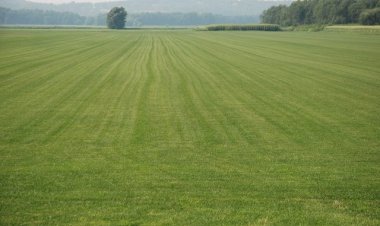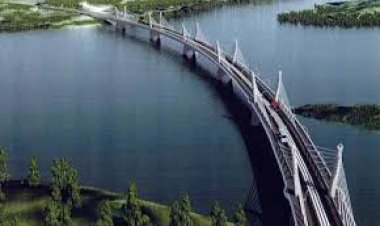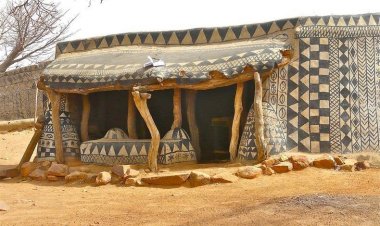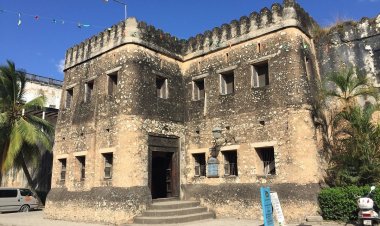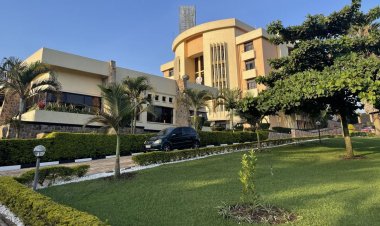Ghana’s Decorated Mud Houses, a Danger?
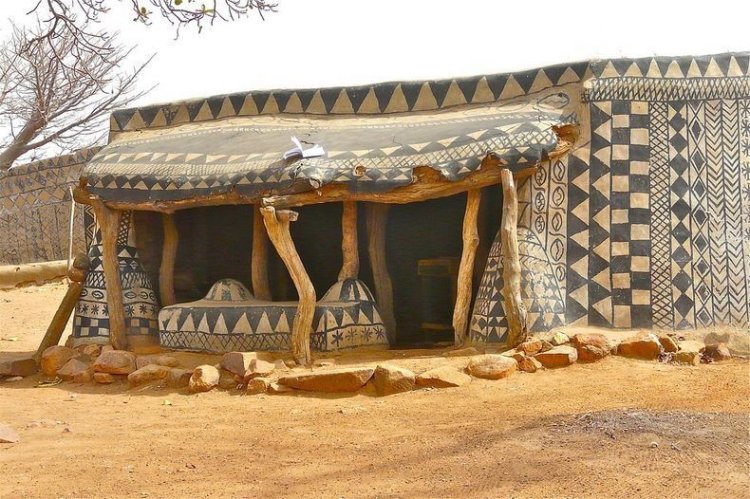
In my early childhood, my grandmother and I lived in the capital city of Ghana, Accra, where we were mostly surrounded by tall and modern buildings, but we never missed the journey to the village during the festive occasions.
I was three years old when we embarked on our first trip to our village; Enyan Abaasa in the Central Region; a small community whose housing looked entirely different from the ones in Accra and not as colourful as I expected.
The buildings had rough surfaces and felt the same to touch. As curious as I was, there were times, I tried tasting the buildings, but failed as I was always stopped.
My fascination with, and memories of mud houses have stayed with me since. A recent visit to my village and the sight of these buildings coupled with the fact that some buildings made from cement have collapsed in recent times in Accra rekindled my interest.
This time, it is not a desire to taste the mud but to find out if after more than two decades, these mud houses are safe havens for their owners as they used to be or they have become death traps.
Mud Houses
Popularly referred to as Atta Kwame, a name derived from the contractors who were mostly from Benin, mud houses are buildings constructed from sand, silt, a small amount of clay and water.
There are four major types of natural mud building techniques which include cob, adobe, rammed earth and wattle and daub techniques.
The simplest and commonest type is the cob which is also the oldest building method. It is a mixture of the soil, some amount of clay, water and possibly additives like grass, cow dung, hay, urine and many others depending on the individual’s interest to build strength.
Rammed Earth involves developing a mixture of sand and clay and compressing it within a mold to shape the walls and other parts. Usually some form of insulation like polystyrene, polyurethane, or even old newspaper in the middle of the wall, which may be also reinforced with steel rods.
Mud or Adobe bricks which are fundamentally made by molding cob into bricks are used in the construction.
Other methods important in the construction of natural buildings include straw bale dwellings which are usually rendered with a mud-based mixture and bamboo and thatches for the ceilings and roofs of mud-based houses.
Most of these mud houses were bound by cement and also plastered with the same, making them unrecognizable but how safe can they be after several years?
An inhabitant Nancy Eyipey is a 70year old woman living in one of such buildings with thirteen rooms in one of the rural areas in Ghana.
Nancy spent her youth in the capital city, Accra, but enjoyed coming home during the festive occasions to meet the entire family who each had a room to themselves due to the large nature of the compound, a reason many believe was the reason for the use of the cheap product, mud for construction.
The building was put up by her deceased mother. She has lived there almost all her life. She said the building was put up a few years before she was born and recalls parts of the building collapsed after a heavy rainfall some sixty years ago and had to be renovated.
“I was very young when some parts of the building collapsed. The only part that didn’t collapse was the toilet and bathroom and I do not know why that did not happen," she added.
She was however glad it happened because that gave an opportunity for the part of the building that collapsed to be rebuilt but this time with bricks.
Advantages Of Mud Houses
In Ghana, mud houses in the northern parts of the country are usually round in nature with thatched roofs.
Mud houses have been proven to provide some form of cold during the hot periods and warmth during the cold due to their natural insulation.
Due to this, one does not have to incur high energy costs in fixing appliances like the fan and Air-conditioners which inadvertently saves cost.
There are others who believe that mud houses are healthy with no irritant chemicals incorporated within the mixture to cause any allergic reactions.
An Expert’s View
According to Bright Addo, a building contractor, the material cost of building mud houses is only a fraction of the cost of building a conventional house with commercial materials.
However, labour is the major cost as only a few have the expertise required.
The Risks
As much as there are many benefits, there are also risks involved in mud houses that have existed since the days of old.
Most of these buildings have been under intense pressure from the heavy rains thereby causing the foundations of many to be exposed due to erosion.
The poor maintenance culture of the Ghanaian has also contributed to the dilapidating structures.
Unfortunately, there are still buildings like that existing even in our cities that are made of mud waiting to collapse any moment and putting many at risk.
According to a report by the National Disaster Management Organisation in Ghana, hundreds of mud houses collapsed in the Upper East region alone in 2019, and nineteen others were also killed from the collapse after heavy rainfall.
There are several such reports from around the country regarding mud houses. It is, however, important to note that mud houses are gradually making a comeback at a slow pace and in a modernized way.
An Intervention?
In Ghana, an eco-friendly organization, Hive Earth, has started a project where they are using 21st-century techniques that leverage the power of bioclimatic design.
The construction which is solely made of rammed earth costs less and can last thousands of years without maintenance.
It is also expected to reduce extreme heat with resistance to insects and the absence of toxins.
Modernization as a Tool for Poverty Alleviation
The modernized mud houses can become a new tool in poverty alleviation and as a catalyst in developing an alternative economy, which may be very important with forecasted world economic slow-down over the coming years.
However, for this to be achieved, it requires new cooperative business models, basing value upon labour and skills, rather than technology. Social evolution may be about going back to the future.
The Ministry of Works and Housing should recognize the traditional mud houses as an important part of the housing sector and develop policies to maintain and sustain them.
Real Estate institutions must think of more effective and modernized ways of putting up such buildings for the benefit of all.
To save the future, it is important the present is saved and such buildings either maintained or pulled down.

 Adwoa
Adwoa 








